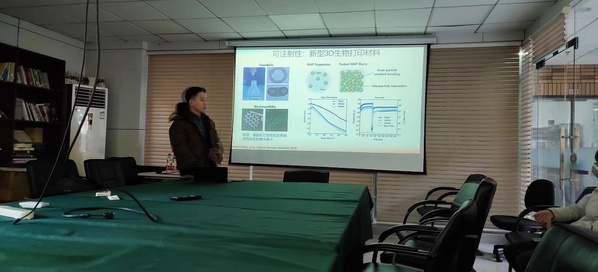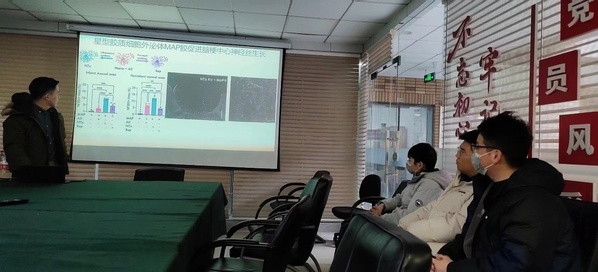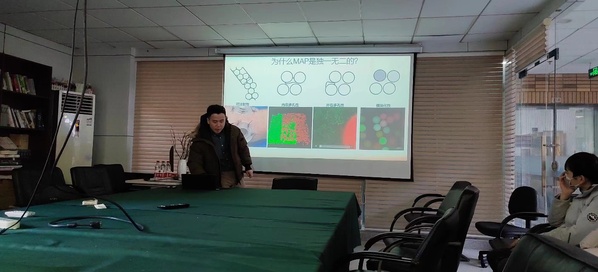On December 22, 2023, the 185th Youth Academic Salon of CBEIS was held in the Zhouyiqing Suite of Yuquan Campus, Zhejiang University. Dr. Xin Shangjing, a Hundred-Talents Program researcher at Zhejiang University, gave a lecture titled Autologous Tissue Repair Induced by Microsphere Gel Scaffolds to the audience.
Dr. Xin earned his Master's degree of Materials Science and Engineering at the University of Florida. He then completed his Ph.D. of Biomedical Engineering at Texas A&M University and obtained his post-doc position in the Department of Biomedical Engineering at Duke University in the United States. His research experience in the study and development of new biomaterials for tissue engineering scaffolds.

Mr. Xin started by introducing the properties of hydrogel materials and their clinical applications in tissue repair, medical aesthetics, brain disease treatment etc., while also demonstrating the limitations of traditional hydrogel materials used for tissue repair. During his presentation, he elaborated on his research topics and explained in detail how to prepare microsphere gels using microfluidic and other multi-step processes. These microsphere gels are injectable, porous, and shown modular properties. They have micron-sized pores that enable controllable cell growth and guidance of cellular behaviors in three-dimensional structures, which are of high value for applications in the field of tissue engineering. Meanwhile, Dr. Xin also demonstrated the use of microsphere gels in the interventional therapy of patients with cerebral infarction(stroke), which dramatically aids blood vessel regeneration and behavioral recovery in stroke patients.

He stated that patients suffered from cerebral infarction have a window period of neuroplasticity. During this period, the body produces factors that stimulate nerve cell healing. When a second infarction occurs, the window is reopened to promote self-repair of the injured area from the first stroke. Extending the window period of neuroplasticity to enhance the therapeutic effect of cerebral infarction treatment, in this case, presents a new prospective for cerebral infarction treatment and their clinical application of hydrogels in cerebral infarction.

During the Q&A session, the students were highly engaged, asking insightful questions and participating in discussions regarding the preparation method of hydrogel microspheres, comparative observation of experimental animals' behaviors, exploration and optimization of research tools, and the injection time limits of hydrogel, etc. The session was highly rewarding for all those involved.